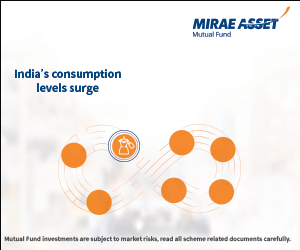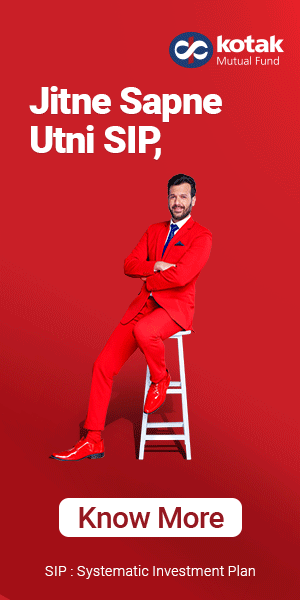Nippon India Large Cap Fund: The best performing large cap fund in last 3 years

Market and economic context
Global equity markets turned volatile in 2022, due to high inflation, interest rate hikes by the central banks and the War in Ukraine. Most markets around the world went into the bear territory. The S&P 500 was down nearly 20%, NASDAQ down 33%, Hang Seng (Hong Kong) down 15%, DAX (Germany) down 12% and the Nikkei (Japan) down 9%. India was an outperformer in 2022, with Nifty closing the year in black.
However, the market conditions have turned difficult in 2023. With inflation remaining elevated globally, especially in the United States, the tone of US Fed was hawkish in the last FOMC meeting. There are concerns in the market that the Fed may keep interest rates high longer than expected, even though they may not increase too much. Strong US jobs data provides further credence to these concerns. Further here in India, the market’s reaction to the Hindenburg report on the Adani group, not only dragged down Adani stocks but also had an effect on banking stocks. The Nifty 50 has fallen by 4% in the first two months (source: NSE, as on 28th February 2023)
In terms of near term outlook, the main risk factor is the impact of the interest rate tightening cycle on the US economy and whether the US will go into recession. Several US investment banks like Goldman Sachs, Bank of America etc, are predicting a recession in the US later in the year. The threat of recession will be an overhang on equity markets globally and we may see continued volatility in equities.
In uncertain markets, asset allocation is extremely important to maintain portfolio stability. As far as equity is concerned, asset allocation to large caps will reduce downside risk and provide a foundation for long term capital appreciation in market recovery in equities is usually led by the large caps.
Suggested reading how can one investor know whether the markets have bottomed out
Why invest in large cap funds
- There are considerable macro-economic uncertainties in the near term due to sticky inflation, hawkish Fed stance and risk of recession in the US. Though the US Federal Reserve has reduced the rate hike in the last FOMC meeting, it has indicated that it will continue hiking interest rates till the inflation target is met.
- Equity markets may already have discounted interest rates of up to 5.25% – 5.5% in stock prices (interest rates are in 4.5% - 4.75% range in February 2023). However, we may see a correction in equities if the Fed takes interest rates to 6% or higher.
- Large caps (top 100 stocks by market capitalization) have provided relative stability to the investor’s portfolio in volatile market conditions – lower downside risks (see the chart below showing some of the biggest market drawdowns over the last 15 years).

Source: National Stock Exchange, Advisorkhoj Research, as on 28th February 2023.
- The IMF has predicted that the India’s GDP growth will slow down from 6.8% in 2022 to 6.1% in 2023, before picking up again in 2024. The slowdown will primarily be due to lower consumer demand and slowing exports. You should understand that, despite the slowdown, India will still be one of the best performing economies because the developed markets are slowing down much more than India.
- Large cap stocks with market leadership in different industry sectors will be better positioned to face the near term headwinds to revenues and earnings growth. Large caps also have bigger balance sheets, cash reserves and more efficient access to financing compared to mid and small caps. Since large caps can spend more on capex, they will be better positioned in the early stages economic recovery.
- The large cap segment of the market (top 100 stocks by market capitalization) has been a wealth creator for investors over long investment horizons. The chart below shows the growth of Rs 10,000 invested in Nifty 100 TRI over the last 20 years (as on 28th February 2023). You can see that your investment would have multiplied nearly 25 times in the last 20 years at a CAGR of 17%.

Source: Bombay Stock Exchange, Advisorkhoj Research, as on 28th February 2023.
- Large cap mutual fund schemes have traditionally been one of the most, if not the most, popular equity mutual fund category among investors – both retail and HNIs. In the current market conditions large caps may be more suitable for investors who do not have very high risk appetites, in this current economic and market environment. Nippon India Large Cap Fund has been the best performing large cap fund in the last one year (please check the best performing large cap funds in the last 1, 3 and 5 years).
Suggested reading how does one select a good mutual fund
About Nippon India Large Cap Fund
Nippon India Large Cap Fund was launched in August 2007 and has Rs 12,536 crores of assets under management (AUM) as on 31st January 2023. The expense ratio of the scheme is 1.81%. The scheme is helmed by veteran fund manager Shailesh Raj Bhan (since 2007) and Ashutosh Bhargava (since 2021). Mr Bhan has been managing the scheme since inception. SEBI classifies the top 100 stocks by market capitalization as large cap. As per SEBI’s mandate for large cap funds, the scheme invests at least 80% of its assets in large cap stocks.
Wealth Creation by Nippon India Large Cap Fund
Rs 10,000 invested in Nippon India Large Cap Fund 10 years back would have multiplied more than 4 times (as on 6th March 2023). The scheme has outperformed Nifty 50 TRI over the past 10 years.

Source: Advisorkhoj Research (as on 6th March 2023)
Wealth creation through SIP
The systematic investment plan (SIP) performance of the scheme over the last 10 years is equally impressive. A monthly SIP of Rs 10,000 in Nippon India Large Cap Fund would have grown to nearly Rs 30 lakhs in market value (as on 14th April 2022) with a cumulative investment of just Rs 12 lakhs. The annualized SIP return (XIRR) of the scheme was 14%.

Source: Advisorkhoj Research (as on 6th March 2023)
Rolling Returns
As mentioned earlier in our blog, rolling returns is the most unbiased measure of mutual fund performance. The chart below shows the 3 year rolling returns of Nippon India Large Cap Fund versus the scheme benchmark over the last 10 years. We have chosen to show 3 year rolling returns of the scheme because we think investors should have at least 3 year investment horizons when investing in equity funds. You can see that the scheme outperformed its benchmark most of the times.

Source: Advisorkhoj Research (as on 6th March 2023)
Let us now compare the 3 year rolling returns of the scheme with the large cap funds category, in other words, average returns of the scheme’s peers, across different market conditions over the last 10 years. You can see that Nippon India Large Cap Fund consistently outperformed the large cap category average during this period.

Source: Advisorkhoj Research (as on 6th March 2023)
Why invest in Nippon India Large Cap Fund
- Large cap funds provide stability and liquidity to your portfolio in different market conditions.
- Since large cap funds are less volatile than small / midcap funds, they are suitable both for lump sum investments and SIPs.
- Nippon India Large Cap Fund is the top 3 best performing large cap schemes over the last 1 year (see our tool -> Mutual Fund Trailing Returns - Equity: Large Cap)
- Even over long investment horizons Nippon India Large Cap Fund stands out among its peers. It is one of the top 5 best performing large cap schemes over the last 10 years (see our tool -> Mutual Fund Trailing Returns - Equity: Large Cap)
- The scheme has consistently created alphas over long investment tenures.
Who should invest in Nippon India Large Cap Fund
- Investors who are looking for long term capital appreciation.
- This scheme is suitable for your long term financial goals like retirement planning, children’s higher education, children’s marriage, wealth creation etc.
- This scheme is also suitable for young or new investors since large funds are less volatile than flexicap, multicap, midcap or small cap funds.
- You need to have moderately high to high risk appetite for this scheme.
- You need to have minimum 5 years or longer investment horizon for this scheme
Investors should consult with their financial advisors if Nippon India Large Cap Fund is suitable for their investment needs.
Mutual Fund Investments are subject to market risk, read all scheme related documents carefully.
Queries
-
What is the benefit of mutual fund STP
Aug 29, 2019
-
How much to invest to meet target amount of Rs 2 Crores
Aug 26, 2019
-
Can I achieve my financial goals with my current mutual fund investments
Aug 24, 2019
-
Can you tell me return of various indices
Aug 19, 2019
-
What would be the post tax return on different investments
Aug 18, 2019
-
Which Principal Mutual Fund scheme will be suitable for my retirement corpus
Aug 16, 2019
-
What is the minimum holding period for availing NCD interest
Aug 4, 2019
Top Performing Mutual Funds
Recommended Reading
Fund News
-
Kotak Mahindra Mutual Fund launches Kotak Energy Opportunities Fund
Apr 3, 2025 by Advisorkhoj Team
-
Groww Mutual Fund launches Groww Nifty 500 Momentum 50 ETF FOF
Apr 3, 2025 by Advisorkhoj Team
-
Groww Mutual Fund launches Groww Nifty 500 Momentum 50 ETF
Apr 3, 2025 by Advisorkhoj Team
-
ICICI Prudential Mutual Fund launches ICICI Prudential Nifty EV and New Age Automotive ETF FOF
Mar 28, 2025 by Advisorkhoj Team
-
UTI Mutual Fund launches UTI Income Plus Arbitrage Active Fund of Fund
Mar 21, 2025 by Advisorkhoj Team
















